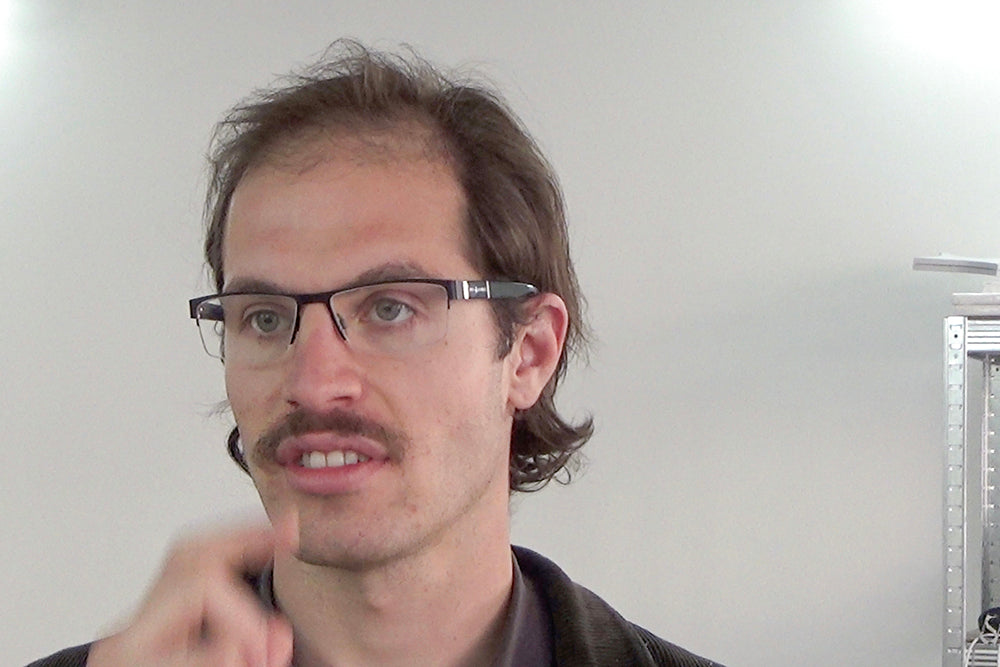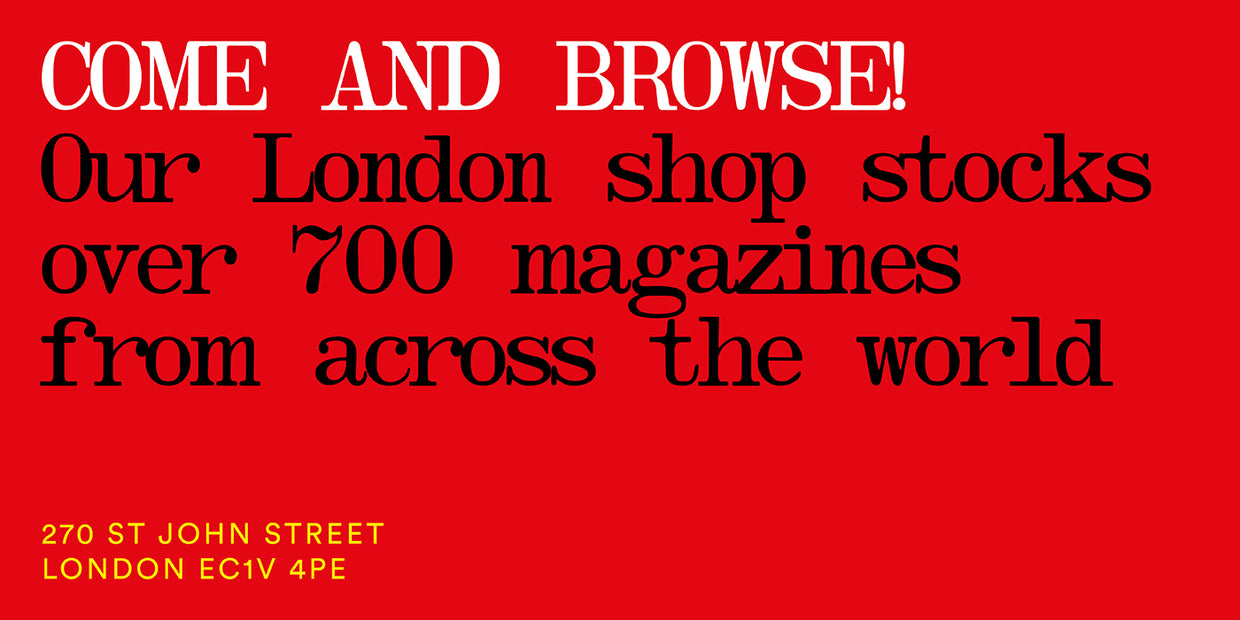
Colton Karpman, New Papers
The first issue of New Papers made an immediate impression here at magCulture, a small but carefully formed piece of print presenting six pieces of writing. It is notable for its marriage of content and form, both assiduously crafted.
As issue two of the monthly zine arrives in shops, founding editor Colton Karpman details the thinking that goes into producing a publication of such extreme clarity.
What are you doing this morning?
This Monday morning, with great contempt for myself and a heavy heart, I am getting out of bed. I am extremely tired, because, for the last two years, I have had an intractable skin condition—a phantom itch—which makes it impossible for me to sleep. I’m reading the ‘Book of Job’ and consequently feeling a little better, because I’m convincing myself that I’m not suffering in vain. It is all a test, and I am being passed to the clutches of Satan for reasons that I not only cannot access, but cannot even comprehend. I’m grinning and I’m bearing it. Then I’m showering, eating two fried eggs, and catching the train to meet Dilara Koz, the Artistic Director of New Papers, at her studio.

Describe your work environment
My schedule is flexible and my work environment irregular. I sometimes work on New Papers from my flat in Shepherds Bush, from which I hear the sounds of the throughput and general anarchy of Uxbridge Road. I get my best work done on the Mildmay Line between Shepherds Bush and Dalston Kingsland. This is for two reasons.

First, the journey is entirely above ground, meaning I can connect my laptop to the internet using my phone as a hotspot. Second, the journey lasts exactly 42 minutes with no changes, which confers the benefits of a fixed deadline while still providing a sufficient amount of time to lock in on at least one task. Collaborative work usually gets done at Dilara’s studio.

Which magazine do you first remember?
I remember dad’s Sports Illustrated: Swimsuit Editions stacked in his closet (suppressing memories of his more sordid periodicals) and mom’s Peoples, which she’d grab off the impulse rack above the checkout conveyor at the grocery store.
Aside from yours, what’s your favourite magazine/zine?
I don’t have a favourite.

What other piece of media would you recommend?
For dogma and edification: Harold Bloom interviews on Youtube. For diversion: Reels.

Describe New Papers in three words
A literary magazine.
Your Notes from the Editor are very particular each issue, as if they are a submission in their own right. What are you seeking to achieve with them?
I dislike the idea of influencing or casting a shadow over a reader’s engagement with the contents of each issue. As always, New Papers remains a paragon of objectivity and impartiality. The Editor’s Note achieves its goal insofar as it as unobtrusively as possible introduces the issue to the reader.
With relatively little space to publish material each edition, how do you select from the many submissions you receive?
Some pieces are commissioned. Submissions are selected by the editors (Harry Lowther, Will McGuire, Isaac Zamet, and myself). We use two discrete standards in evaluating submissions. First, we evaluate a submission based on what we might call its ‘Magnanimity Score’, i.e., how generous a piece is; how much it gives to a potential reader; how un-self-possessed it is. Second, we evaluate a submission based on how surprised we are by a piece and the fact of its existence. I quantify this evaluation through what we call the ‘Criterion of Incredulity’. A comprehensive explanation of these standards is beyond the scope of this analysis, but I hope one gets a clear idea by looking at the work we have published so far.
We aspire toward a harmony within each issue and over all issues. Each piece undergoes an intensive editorial process, to the end of achieving that harmony.

You presented issue two in its entirety as a live reading, as if the magazine was a script. Was that part of the plan?
Both issues have been presented in order and in their entirety at their respective recitals. And all forthcoming issues will be too. Not only was this part of the plan, but maybe the orchestrating principle of New Papers from its conception. All accepted writers are called upon to read their piece at the recital.
If, for whatever reason, they are unable to read, a stand-in is selected to read in their place. These recitals are programmatic, choreographed, and blocked productions. For each recital, New Papers commissions a different artist to design the stage in collaboration with Dilara. Dilara designed the inaugural stage on her own; Maisie Goodfellow designed the stage for NP2. Each recital has a master of ceremonies. (Thank you, Rachel Dastgir and Madeline Cash.)

The physical appearance of the zine plays a key part in its identity; how was that conceived?
Dialectically. Though the magazine is only two issues old, the ideas and rudiments at the core of New Papers date back much further. First—a while ago—Dilara purpose-designed New Papers’ typeface, Loiter. Various physical specifications for the magazine were then considered, discarded, tweaked, scrapped, reconsidered, and reworked before we ended up where we are now. We benefited from the ingenuity and generosity of Holywell Press in Oxford, who print New Papers.
The shape of the development was like that of a curve approaching an asymptote: the lineaments are now basically as we want them, but minor tweaks continue to be made as we jazz toward the light. For example, in NP3, we are experimenting with a different type of adhesive agent for affixing the cover to the body pages. Dilara oversees the design process. Em Bauer is in charge of the illustrations, on both promotional material and on the magazine.
Essentially, the cover of New Papers comprises eight panels and two spines. It wraps around the body pages twice. Because the cover is long enough to wrap around the body pages twice, it can also unfurl like a medieval scroll. On one side of the unfurled cover is the masthead; on the other is the Editor’s Note.

Please show us one spread that sums up how the magazine works, and gives a sense of what the reader can expect from the mag
In a sense, I think any spread might be representative of New Papers, since each piece ought to be a sort-of tonal microcosm of the whole magazine. But this spread is representative in a different way, because it literally represents—in avatar form—every player who has worked on the magazine, as a contributor or behind-the-scenes.
What are you most looking forward to this coming week?
Editing.
Editors Isaac Zamet, Will McGuire and Harry Lowther
Art director Dilara Koz


